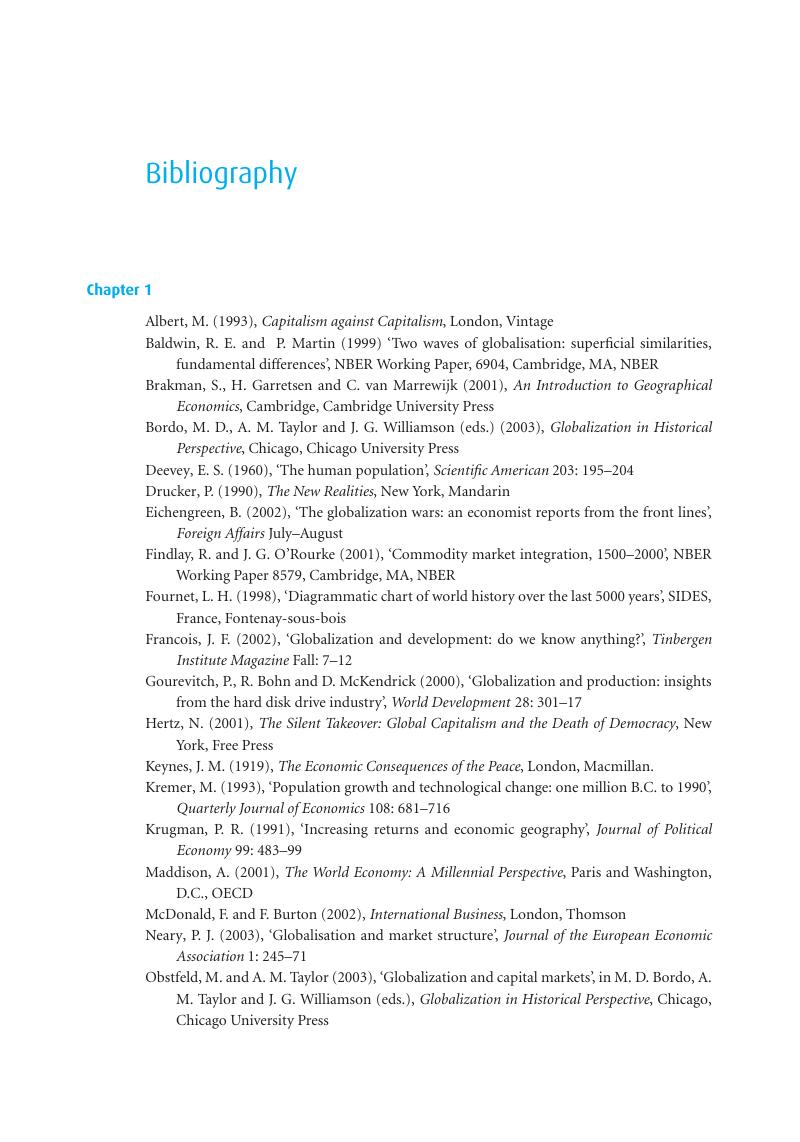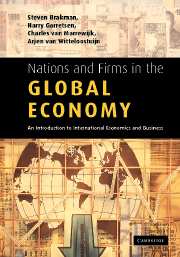Book contents
- Frontmatter
- Contents
- List of figures
- List of tables
- List of boxes
- Preface
- Glossary
- Suggested course structure
- Part I Introduction
- Part II Firms, trade and location
- Part III Capital, currency and crises
- Part IV Policy, dynamics and organization
- Part V Conclusions
- Bibliography
- Author index
- Subject index
- References
Bibliography
- Frontmatter
- Contents
- List of figures
- List of tables
- List of boxes
- Preface
- Glossary
- Suggested course structure
- Part I Introduction
- Part II Firms, trade and location
- Part III Capital, currency and crises
- Part IV Policy, dynamics and organization
- Part V Conclusions
- Bibliography
- Author index
- Subject index
- References
Summary

- Type
- Chapter
- Information
- Nations and Firms in the Global EconomyAn Introduction to International Economics and Business, pp. 406 - 425Publisher: Cambridge University PressPrint publication year: 2006



